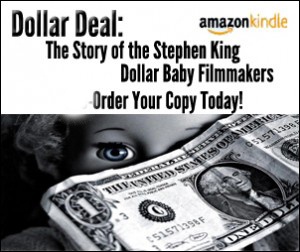Halloween is on a Saturday this year, which means that we get a rare chance to truly indulge ourselves in what is perhaps the most hedonistic, gratuitous, and superfluous holiday on the calendar. Any paganistic roots and traditions of honoring the dead have long since passed into a festival of ironic costumes, excessive drinking, and scary movie marathons. I personally have all of the above covered for my weekend celebrations, including this handy list of some of the best Halloween movies to watch over the weekend.
Ghostbusters: I & II (1986/1989)
Nothing quite beats this humorous tale of a ghost-busting team of scientists who make their fame and fortune hunting and trapping troublesome ghosts. If you’ve never seen either of the movies, there are a number of very good reasons to do so. Number one is Bill Murray. Number two is everyone else in the cast, including Dan Aykroyd, Harold Ramis, Sigourney Weaver, and Rick Moranis. Both Ghostbusters and Ghostbusters II tell wonderfully atmospheric tales of ghosts and demons that plague New York City, but with an ironic sort of tongue-in-cheek flair that appeals to the knowing audience.
The Nightmare Before Christmas (1993)
This is probably my boyfriend’s favorite movie and we watch it both at Halloween and at Christmas. I don’t think there’s any other movie in existence that you can watch with equal validity for both holidays. There’s really nothing that beats the artistic quality, beauty, and originality of the stop-motion animation and production design, the catchiness and thoughtfulness of the music, and the intimate relatability of the story. I mean, putting aside the fantastical residents of Halloween and Christmas Town, who among us hasn’t longed for something more, or even just for something different, than what we have? Its in the spirit of Halloween to indulge those fantasies, even if just superficially, while its in the spirit of Christmas to appreciate what you have.
Halloween: I & II (1978/1981)
I’m definitely a John Carpenter girl and really appreciate the uniquely frightening and visceral quality of his films. While Halloween and its subsequent sequels certainly adhere to classic horror movie conventions, it pioneered those conventions and its format in a very big way. I have a hard time being frightened of fantastical things, but a relentless homicidal maniac – even one that defies logic and reality – definitely scares me. And Jamie Lee Curtis’s Laurie Strode is just the kind of young woman that I can definitely imagine being, or at least wanting to be. Put it all together in a small, Everytown USA setting on an atmospheric Halloween night and you feel as if this story could take place anywhere and to anyone. And that’s scary.
Psycho (1960)
Its the horror movie that changed the genre, challenged film content standards across Hollywood, and made taking a shower the most frightening part of your daily routine. And while the pop-psychology ending might be drastically out of date and simplistic today, the movie itself and the fear it instills is as vibrant and alive as ever. I remember turning to this movie for the first time in the middle of the famous shower scene, not knowing what I was watching or what would come next. I was young – too young – and the shadowy figure with the knife who cut down the vulnerable Janet Leigh (mother of Jamie Lee Curtis) in the cleansing safety of her shower echoed my deepest fears. I turned off the TV before the knife struck and had my mother guard the door to the bathroom that night.
It Follows (2014)
It might be a little early to say this, but It Follows might be one of the great modern horror classics of our time. I’m not actually all that into straight horror movies, but I’ll see anything and a friend wanted to go. Not only is the story wildly inventive, but the plot breaks and bends horror conventions to the point where the movie is actually unpredictable. In fact, there are almost no moments where you can anticipate the next action. And its in the nature of the story for any person to be a potential threat, the thing that follows, so the film relies less on cheap scare tactics as it does an overwhelming, gripping, and ceaseless tension. Or else if you ever do drop your guard and relax just a little, you are immediately punished for your lapsed vigilance. What’s scariest of all is that the film has no permanent solution or port of safety – simply a solution of constant vigilance and a grim acceptance of things as they are.
Nosferatu (1922)
One of the most atmospheric and visually striking directors – not just of his time but in all of cinematic history – is the German Expressionist filmmaker F.W. Murnau. While Nosferatu, the infringingly familiar story of a foreign Count who has plans to move to the city and take his estate agent’s wife as his own, is as dark, frightening, and plain-old-creepy as just about anything, Murnau’s other works share a common atmosphere and visual style that leaves one haunted. Adding to the creep-factor is the vampiric Count Orlok, played by the ordinarily creepy-looking Max Schreck. It is perhaps the scariest, most nightmarish you will ever find a cinematic vampire, partly for looks but also because of his strangely unnatural and disturbingly sensual encounters with the woman of the story. He creeps over her like a shadow and seems to swarm over her like an unbidden dream.





